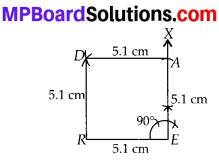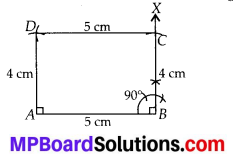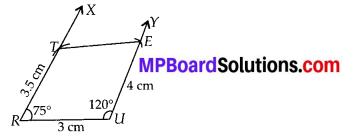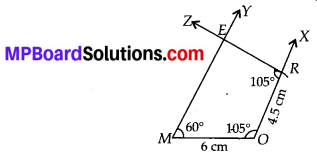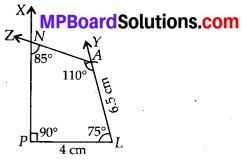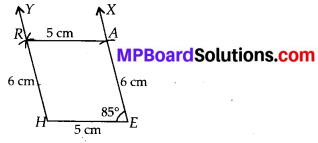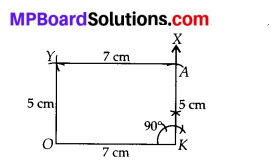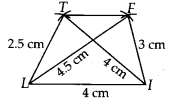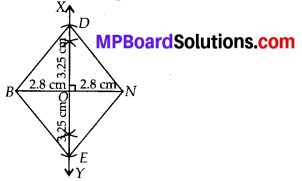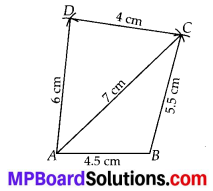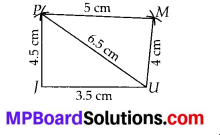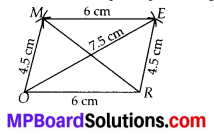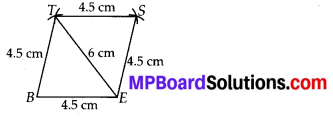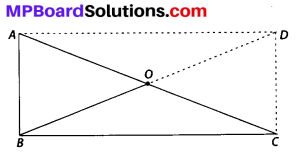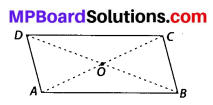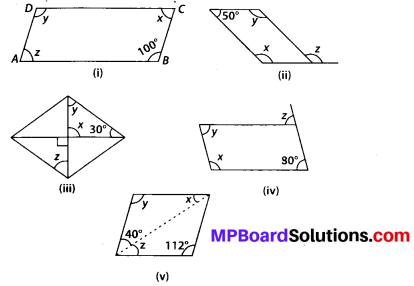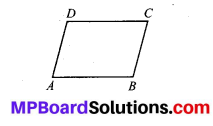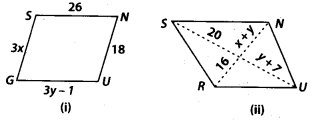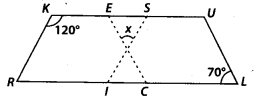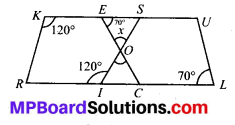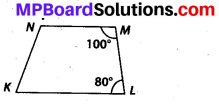MP Board Class 11th Maths Solutions Chapter 1 समुच्चय Ex 1.1
प्रश्न 1.
निम्नलिखित में कौन से समुच्चय हैं? अपने उत्तर का औचित्य बताइए।
(i) j अक्षर से प्रारम्भ होने वाले वर्ष के सभी महीनों का संग्रह।
(ii) भारत के दस सबसे अधिक प्रतिभाशाली लेखकों का संग्रह।
(iii) विश्व के सर्वश्रेष्ठ ग्यारह बल्लबाजों का संग्रह।
(iv) आप की कक्षा के सभी बालकों का संग्रह।।
(v) 100 से कम सभी प्राकृत संख्याओं का संग्रह।
(vi) लेखक प्रेमचन्द द्वारा लिखित उपन्यासों का संग्रह।
(vii) सभी सम पूर्णाकों का संग्रह।
(viii) इस अध्याय में आने वाले प्रश्नों का संग्रह।
(ix) विश्व में सबसे अधिक खतरनाक जानवरों का संग्रह।
हल:
(i) j से शुरु होने वाले महीनों के नाम : जनवरी, जून व जुलाई।
अतः यह एक समुच्चय है।
(ii) प्रतिभाशाली लेखक को परिभाषित नहीं किया जा सकता।
इसीलिए यह एक समुच्चय नहीं है।
(iii) सर्वश्रेष्ठ बल्लेबाज को परिभाषित नहीं कर सकते।
अतः यह एक समुच्चय नहीं है।
(iv) कक्षा के सभी विद्यार्थियों की संख्या निश्चित होती है।
अत: यह एक समुच्चय है।
(v) 100 से कम प्राकृत संख्याएँ 1, 2, 3, ……. 99 हैं।
अतः यह एक समुच्चय है।
(vi) लेखक प्रेमचन्द्र द्वारा लिखित उपन्यासों का संग्रह गबन, गोदान आदि द्वारा परिभाषित हैं।
अतः यह एक समुच्चय है।
(vii) समपूर्णांक {…. . – 6. – 4. 2, 4, 6, ….} हैं।
इसलिए यह एक समुच्चय है।
(viii) इस अध्याय के प्रश्न परिभाषित हैं।
अतः यह एक समुच्चय है।
(ix) संसार के सबसे अधिक खतरनाक पशुओं के संग्रह को परिभाषित नही किया जा सकता।
इसलिए यह एक समुच्चय नहीं है।
प्रश्न 2.
मान लीजिए A = {1, 2, 3, 4, 5, 6}. रिक्त स्थानों में उपयुक्त प्रतीक ϵ अथवा ∉ भरिए।
(i) 5…… A
(ii) 8 …….. A
(iii) 0 ……… A
(iv) 4……. A
(v) 2 …….. A
(vi) 10 ……. A
हल:
(i) 5 ϵ A
(ii) 8 ∉ A
(iii) 0 ∉ A
(iv) 4 ϵ A
(v) 2 ϵ A
(vi) 10 ∉ A
प्रश्न 3.
निम्नलिखित समुच्चयों को रोस्टर रूप में लिखिए :
(i) A = {x : x एक पूर्णांक है और -3 < x < 7}
(ii) B = {x : x संख्या 6 से कम एक प्राकृत संख्या है?
(iii) C = {x: x दो अंको की ऐसी प्राकृत संख्या है जिसके अंकों का योगफल 8 है।
(iv) D = {x : x एक अभाज्य संख्या है जो 60 की भाजक है?
(v) E = TRIGONOMETRY शब्द के सभी अक्षरों का समुच्चय
(vi) F = BETTER शब्द के सभी अक्षरों का समुच्च्य
हल:
(i) A = {-2, – 1, 0, 1, 2, 3, 4, 5, 6}
(ii) B = {1, 2, 3, 4, 5}
(iii) C = {17, 26, 35, 44, 53, 62, 71, 80}
(iv) D = {2, 3, 5}
(v) E = {T, R, I, G, O, N, M, E, Y}
(vi) F = {B, E, T, R}
![]()
प्रश्न 4.
निम्नलिखित समुच्चयों को समुच्चय निर्माण रूप में व्यक्त कीजिए :
(i) {3, 6, 9, 12}
(ii) {2, 4, 8, 16, 32}
(ii) {5, 25, 125, 625}
(iv) {2, 4, 6, ….}
(v) {1, 4, 9, …… 100}
हल:
(i) {x : x = 3n और 1 ≤ n ≤ 4}
(ii) {x : x = 2n और 1 ≤ n ≤ 5}
(iii) {x : x = 5n और 1 ≤ n ≤ 4}
(iv) {x : x एक सम प्राकृत संख्या है?
(v) {x : x = n2, 1 ≤ n ≤ 10}
प्रश्न 5.
निम्नलिखित समुच्चयों के सभी अवयवों (सदस्यों) को सूचीबद्ध कीजिए।
(i) A = {x : x एक विषम प्राकृत संख्या है?
(ii) B = {x : x एक पूर्णांक है, \(-\frac{1}{2}\) < x < \(\frac{9}{2}\)}
(iii) C = {x : x एक पूर्णांक है, x2 ≤ 4}
(iv) D = {x : x, LOYAL शब्द का एक अक्षर है?
(v) F = {x : x वर्ष का एक ऐसा महीना है, जिसमें 31 दिन नहीं होते हैं।
(vi) F = {x : x अंग्रेजी वर्णमाला का एक व्यंजन है, जो k से पहले आता है।
हल:
(i) A = {1, 3, 5, 7, ………..}
(ii) B = { 0, 1, 2, 3, 4}
(iii) C = {-2, – 1, 0, 1, 2}
(iv) D = {L, O, Y, A}
(v) E = {फरवरी, अप्रैल, जून, सितम्बर, नवम्बर}
(vi) F = {b, c, d, f, g, h, j}
![]()
प्रश्न 6.
बाई ओर रोस्टर रूप में लिखित और दाईं ओर समुच्चय निर्माण रूप में वर्णित समुच्चयों का सही मिलान कीजिए:
(i) {1, 2, 3, 6} – (a) {x : x एक अभाज्य संख्या है और 6 की भाजक है}
(ii) {2, 3} – (b) {x : x संख्या 10 से कम एक विषम प्राकृत संख्या है?
(iii) {M, A, T, H, E, I, C, S} – (c) {x : x एक प्राकृत संख्या है और 6 की भाजक है}
(iv) {1, 3, 5, 7, 9} – (d) {x : x MATHEMATICS शब्द का एक अक्षर है।
हल:
(i) ↔ (c)
(ii) ↔ (a)
(iii) ↔ (d)
(iv) ↔ (b)
